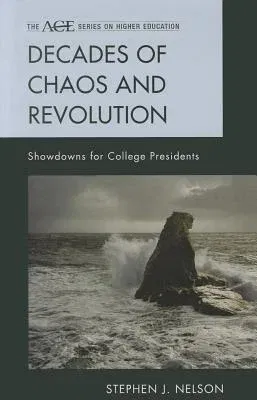Decades of Chaos and Revolution: Showdowns for College Presidents is the
story and comparison of two eras in the history of higher education. The
first era covers the period of the 1960s through the mid-1970s, and the
second is the first decade of the twenty-first century. Both decades
were marked by events that shook the foundations of colleges and
universities, and society as a whole. Nelson weaves an engaging story,
told through the eyes of the presidents of the institutions that were
involved in the chaos of those eras. For colleges and universities and
their presidents, these two decades are the toughest, most tense and
demanding of times in the last hundred years, and likely in the entire
history of colleges and universities in America. The enduring images are
equal parts chaos and change, revolution and recovery, dashed dreams and
unflagging hopes. Nelson asks, of the two eras, which faced the greater
challenges? Which era required more profound leadership? And which was
the more difficult and demanding of their time to navigate successfully?
It is clear that Steve Nelson sees the era of the 1960s and '70s as the
most difficult. He believes that it was the presidents of that earlier
era who confronted dilemmas and controversies unimagined before and not
witnessed since. Decades of Chaos and Revolution presents an insightful
picture of the tension and tumult that presidents of the 1960s and '70s
had no choice but to face. Nelson traces the roots of ideological
battles in the university that have persisted over the last sixty years.
He examines what worked and what didn't in the tactics used by
presidents in the face of the demands inspired by the protests and
politics of the 1960s and shows how they have shaped succeeding
generations of presidents. Then he unravels the parallel issues and
unfinished business of the 1960s, which evolved in ensuing decades, and
with which presidents in the twenty-first century must also grapple.
Watch the author talk more about the book on YouTube: Part I: Triggers
leading up to the revolutions of the 60s/70s. Part II: Changes in the
college presidency, and the inspiration for the book.

